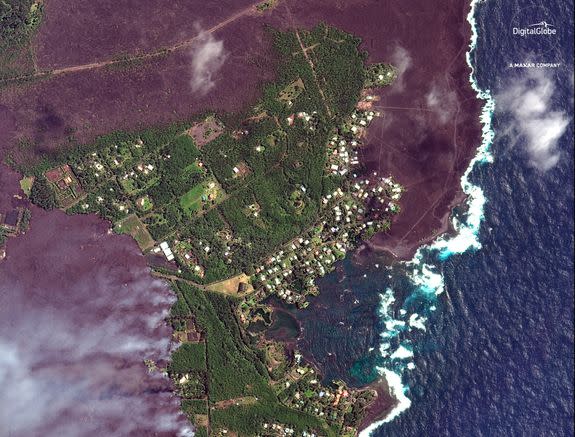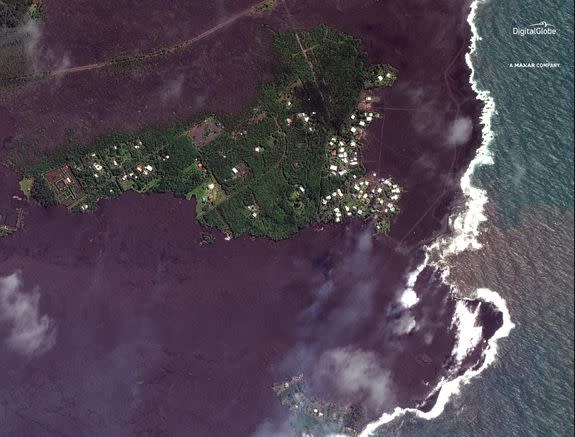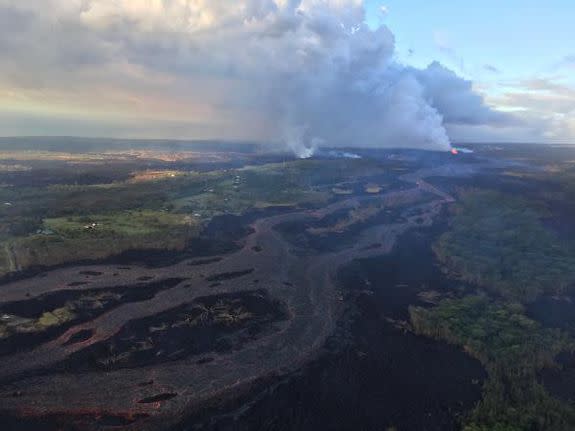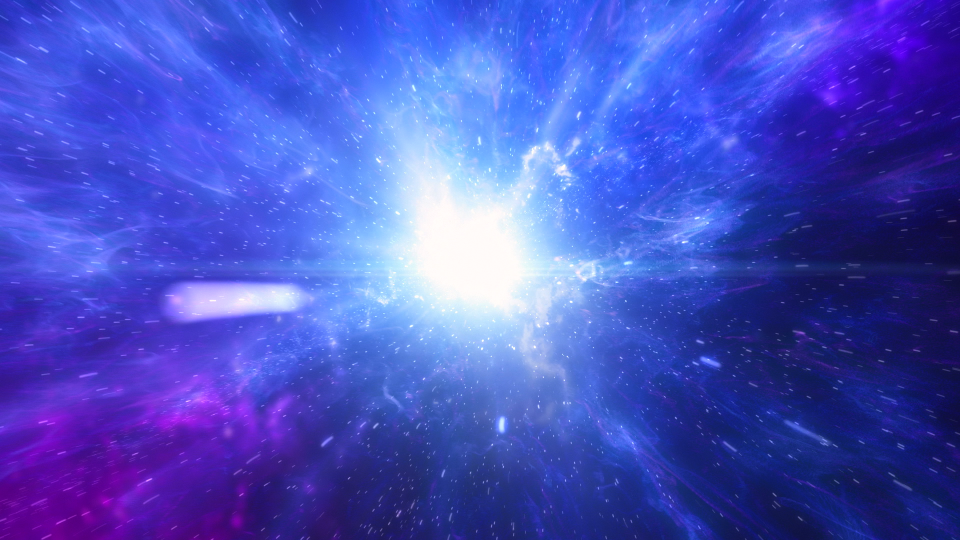Lava transforms a Hawaiian bay into a blackened peninsula

The shallow, tropical waters of the Big Island's Kapoho Bay are no longer: Satellite images show a bay overtaken by lava, transformed into a black mass of land jetting into the sea.
Lava meeting the ocean is, of course, the way Hawaiian islands grow. Unfortunately, the rumbling flow of lava from the Kilauea volcano engulfed more than 130 homes in the neighborhoods of Vacationland and Kapoho Beach Lots — including the home of the Hawaii County Mayor — before oozing to the beach.
SEE ALSO: Why Guatemala's volcano erupted in deadly avalanches, but Hawaii's hasn't
As of June 6, the island's Civil Defense agency said lava is still actively pouring into the ocean, where it produces dangerous clouds of acidic steam, filled with natural glass particles.

Image: DigitalGlobe
The lava is coming from one of more than 20 fissures, or long cracks in the ground, that have opened up atop Hawaii's actively growing Kilauea volcano over the last month. As of June 5, the U.S. Geological Survey (USGS) reports molten rock shooting from the ground and fountaining between 150 and 180 feet into the air before slowly flowing downhill, toward the ocean.

Image: DigitalGlobe

Image: DigitalGlobe
This volcanic activity is happening on the southwestern portion of the Big Island, so it's not a threat to most of Hawaii. But it's locally devastating, and volcanologists have no expectation of it ending anytime soon.
Based upon past eruptions, volcanologists suspected this one could last a month or months, and it seems they're right. Also, Kilauea is now tapping intensely hot molten rock from deep underground. This means the lava is coming from a new source than the stuff that spewed from the ground in early May.

Image: Usgs
This eruption will continue to pour lava over the island, and much of it will find its way into the ocean, perhaps filling more iconic Hawaiian bays.
WATCH: Ever wonder how the universe might end?


